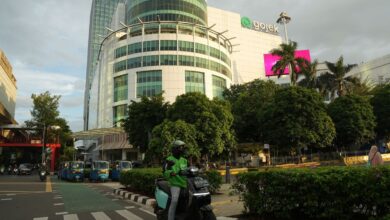
E-commerce giant Amazon’s Prime Day sale in India began on July 20, and will end at 11.59 pm on July 21. Discounts and deals on a range of products will be available to those who have Amazon Prime membership.
While Amazon does not release earning figures from Prime Day, online sales tracker Adobe Analytics said consumers spent $14.2 billion last Tuesday and Wednesday — when countries like the United States and the United Kingdom had Prime Days.
This year, 20 countries — including Australia, France, Germany, India, Japan, Saudi Arabia, and Singapore — will have Prime Days.
Why did the company launch the sales event eight years ago, and how has it fared? Are the deals worth it, and is there a hidden cost to them?
What is Amazon Prime Day?
For a limited one or two-day period every summer, Amazon offers Prime membership holders access to a sale. The cost of the membership varies across countries and entitles members to free and quick deliveries, alongside other perks.
Prime Days are meant to drive shopping sprees and purchases of Prime memberships. During the peak of the 2023 Prime Day, 22,190 orders were placed in a single minute in India.
Over the two-day Prime Days last year, Prime members purchased more than 375 million items worldwide, making it the biggest Prime Day event so far.
Why did Amazon launch Prime Days?
The first Prime Day was held in the US on July 15, 2015, to mark Amazon’s 20th anniversary. In India, it took place for the first time in July 2017. There are several explanations for its origins and possible inspiration.
Summer is considered a slower retail season in the US as consumers are more inclined to spend on travel and restaurants, according to a report by the Associated Press. As a result, to boost sales, companies offer summer sales.
This is not exactly a novel idea. Chinese e-commerce companies like Alibaba have pioneered this strategy to spike their sales.
For instance, in 2009, Alibaba turned November 11 — the so-called “Singles’ Day”, which was an invention of university students as an alternative to Valentine’s Day — into a 24-hour mega-shopping festival with attractive deals. The event also included live performances from major artists as a marketing strategy.
The festival was so successful that it became an annual affair. Today, Singles’ Day has become the world’s biggest 24-hour online sale, with Alibaba and JD (another major Chinese retailer) each achieving sales levels higher than what Black Friday and Cyber Monday — two major shopping events in the US — together achieve, according to research advisory firm Coresight Research.
In 2019, Alibaba hosted a four-hour-long live show, featuring Chinese and international celebrities such as Taylor Swift. The same year, Amazon also hosted a live concert for its Prime members, featuring the likes of Swift and Dua Lipa, ahead of its sale.
Are Prime Days good for Amazon and its customers?
In general, customers can find deals on multiple product categories. The Indian Express found that this year, Amazon has a slightly steeper discount for key Apple, Samsung and OnePlus products, compared to what one is likely to get at their physical stores.
But The New York Times’ product review website Wirecutter argued that most deals this year in the US “stink”. “Overinflated ‘full’ prices, middling price drops, and hype instead of substantive savings are the norm for many of these retailer-concocted deals events,” it said.
And while Amazon posts big numbers, it does not offer much context for them. In a 2017 Bloomberg opinion article, journalist Shira Ovide wrote, “If Prime Day were an important financial event for Amazon — and not merely relevant for vanity metrics — then the company would have to tell investors. Instead, Prime Day wasn’t mentioned once in Amazon’s earnings report last year for the quarter.” This holds for last year, when the Q3 earnings report mentioned another major Amazon sale (the pre-holiday season Prime Big Deal Days in October) instead of the Prime Days in July.
Estimates suggest that “Prime Day is most likely a significant boost to a typical sales day”, she wrote. In recent years, however, the hype has not translated into the numbers expected from the company.
Stephen Lee, founding principal at Logan Capital Management, told Bloomberg this year, “Prime Day is less of a catalyst than it used to be, but it’s an opportunity to highlight how Amazon offers reasonable values on top of the game-changer of same-day delivery.”
Bloomberg also estimated that continued inflation in the US may be one factor for lagging sales. Other mega-brands, such as Walmart and Target, have also begun offering discounts ahead of Prime Days.
Prime days have also come under scrutiny for other reasons. A US Senate report under Senator Bernie Sanders found in April that the days are a “major cause of injuries” for warehouse workers who pack the goods. “Despite making $36 billion in profits last year and providing its CEO with over $275 million in compensation over the past three years, Amazon continues to treat its workers as disposable and with complete contempt for their safety and well-being. That is unacceptable, and that has got to change,” Sanders said.
Criticism of such sale days has also come from an environmental perspective as they can encourage large-scale consumption of unnecessary goods. The deliveries result in fuel emissions, packaging includes plastic and other difficult-to-recycle materials. Overconsumption also contributes to greater waste, further filling up landfills and polluting the oceans.
Read More



